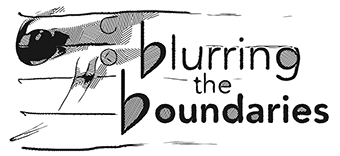This is a preview of our new podcast, in which we speak with people who are blurring the boundaries between the roles of artists, makers, musicians, dancers, coders…
In this part of the conversation, we got into some of the reasons Joanne had chosen to feature bed bugs in her pieces…and this led to some insight into challenges facing Disabled people in Britain at the moment.
? Show transcript
0:43
Jo: The bedbugs, they symbolise anything that represses people, and that people have to fight against.
Things that drain you because they literally suck your blood.
0:59
So anything that drains you of life, that’s what the bedbugs represent.
1:07
And in this story, for Disabled people in the UK, there’s assessments by the Department of Work and Pensions for welfare benefits.
1:24
And they’re handed over to private medical companies that … er … have lost their moral compass [laughs].
And it’s a lot about profiteering.
1:39
And the assessments, they’re not really fit for purpose.
They’re often flawed.
There’s a lot of mistakes made, and also the whole process is extremely biassed in favour of not giving the award.
2:01
It’s very stressful. And if you lose the welfare benefit, or if it’s not awarded, then you have an appeals process, which is very bureaucratic, and very difficult.
2:19
It’s practically impossible without any support.
And it’s very hard to get that support, often.
And for many people it’s too much for them.
They cannot go through the process.
2:36
And sadly, it’s left a lot of people living in really bad poverty, and thousands of people have actually died in relation to welfare benefit assessments.
2:53
Yeah, so the bed bugs represent profiteering companies that are basically profiteering from Disabled people, and causing them a lot of stress.
3:11
So that’s one thing that the bedbugs represent.
In UK, for mental health system survivors, there’s also the recovery model.
And that’s become … it’s been hijacked as a cost cutting thing and a reason to take away services.
3:38
And it’s become a cure, a false cure that’s saying, "Oh yeah, you’re all better now". Because you’ve done you know, 10 minutes of CBT or whatever.
3:50
It oppresses people from becoming, growing into their real authentic self .. and it’s crushing all the great things about their neurodivergence.
It’s basically about fitting in.
So that’s like, an attack, and that’s very draining as well.
4:08
So that’s what the bedbugs represent to me.
I connected them with bedbugs because somebody who I won’t name, but they brought bed bugs to my flat by accident!
4:26
And so, you have to put the poison down. And you have to lie down asleep on the floor. And then they walk across the poison.
And that’s how you get rid of them… they walk…you have to lie there and attract them.
And you just feel completely powerless.
4:45
Gift: good god
4:47
Jo: because you know you’re going to sleep as bait for these bedbugs to come and bite you.
So, it felt very much the same as going through these awful assessments.
Meet the team and find out more about Joanne’s artistic practice at cello.joannesonia.live


